8. Things Change (1988, David Mamet)
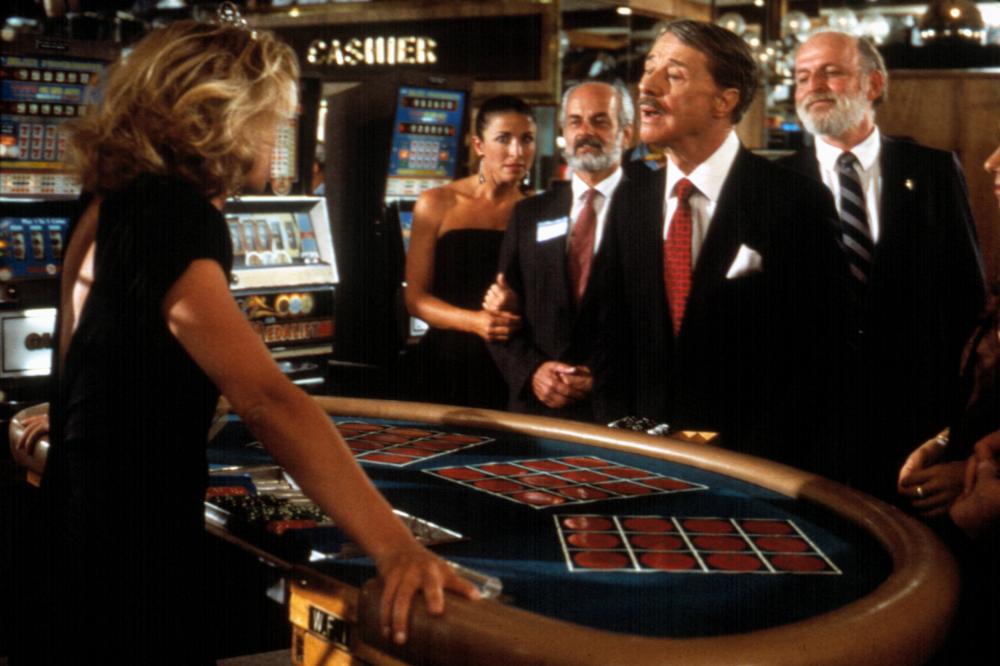
Influential playwright and filmmaker David Mamet explores in his piece “Things Change” the life of an Italian-American named Gino (Don Ameche), a shoe-shiner who was hired by the mafia to perform a ‘service’ – take the guilt in a murder charge, a felony committed by another gangster. Gino agrees because he is offered a large sum of money to do so.
During his preparation for his court confession, Gino is met by Jerry (Joe Mantegna), a low-level gangster who has recently gotten into trouble with his bosses. During a stay at a local hotel, Jerry decides to take Gino to Lake Tahoe before he goes to prison in order to celebrate his last days of freedom.
“Things Change” is a comedy that works very well mainly due to its plot and the performances of its actors, who work frequently with the director in his previous films and plays. The dialogue is also another thing to keep in consideration specially because this film works as a tragicomedy that touches very serious issues and life-related values in a light manner.
7. Black Rain (1989, Ridley Scott)
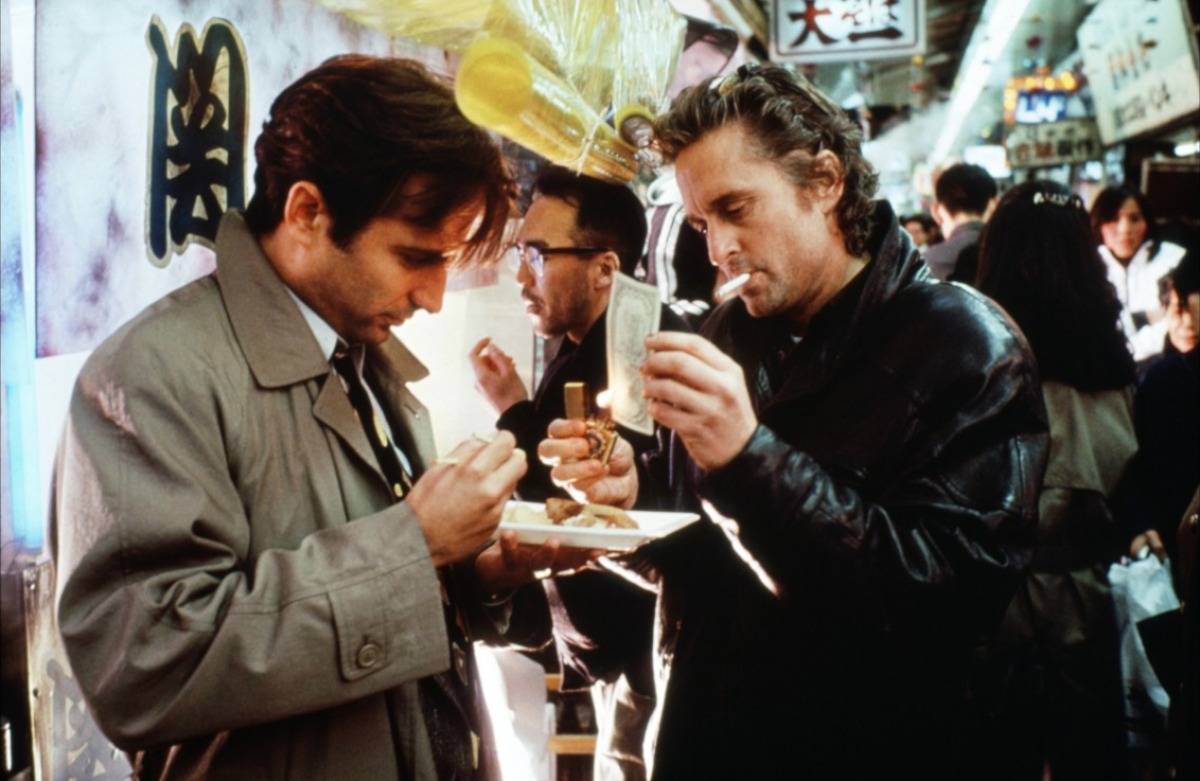
Perhaps one of the least successful career achievements of director Ridley Scott, “Black Rain” is nevertheless a film that follows a similar path of one of the previously listed titles – 1974’s “Yakuza”.
The film revolves around a pair of New York police officers, Nick Conklin (Michael Douglas) and Charlie Vincent (Andy Garcia), who after arresting a member of the Yakuza gang (Ken Takakura) must escort him to Japan. In Japan, the man escapes and they are obliged to chase him, which results only in their deepening into the Japanese underworld.
The film doesn’t quite meet its potential, mainly because the plot isn’t that fresh. However, the director manages to conceive pretty interesting scenes, visually speaking, making a great use of the film’s locations regarding framing, light, and colour. Examples of this are the film’s various chase scenes at night, on the streets.
6. Gloria (1980, John Cassavetes)
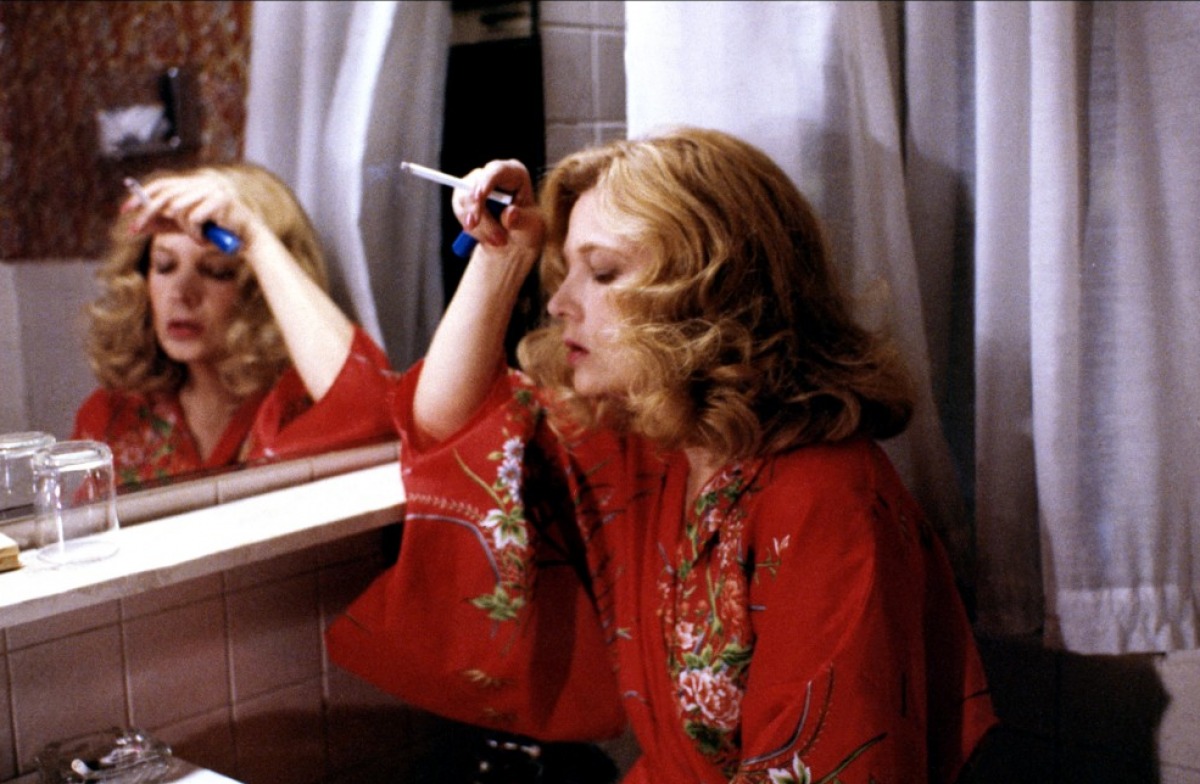
Another of the endless list of collaborations between John Cassavetes and Gena Rowlands, “Gloria” is centred on a woman named Gloria Swenson (Gena Rowlands) who becomes the guardian of her neighbour’s child, a Puerto Rican boy (John Adames), after his family’s murder at the hands of the mob.
After this tragic event, the mob starts chasing the child, who has an object of their interest with them, and so it’s Gloria’s mission to protect him, thus starting a cat-and-mouse chase around New York and New Jersey.
Similarly to his earlier films, Cassavetes does a character study of this woman named Gloria who lives in one of New York’s most ‘critical’ areas. Thus, the film has many situations whose purpose is to explore the character’s interiority without relying so much on dialogue. Another noteworthy aspect about this film is its locations, which help provide the film with a sense of unity and truthfulness, while providing yet different point of view about the concept of gangs and gangster activity.
5. Atlantic City (1980, Louis Malle)
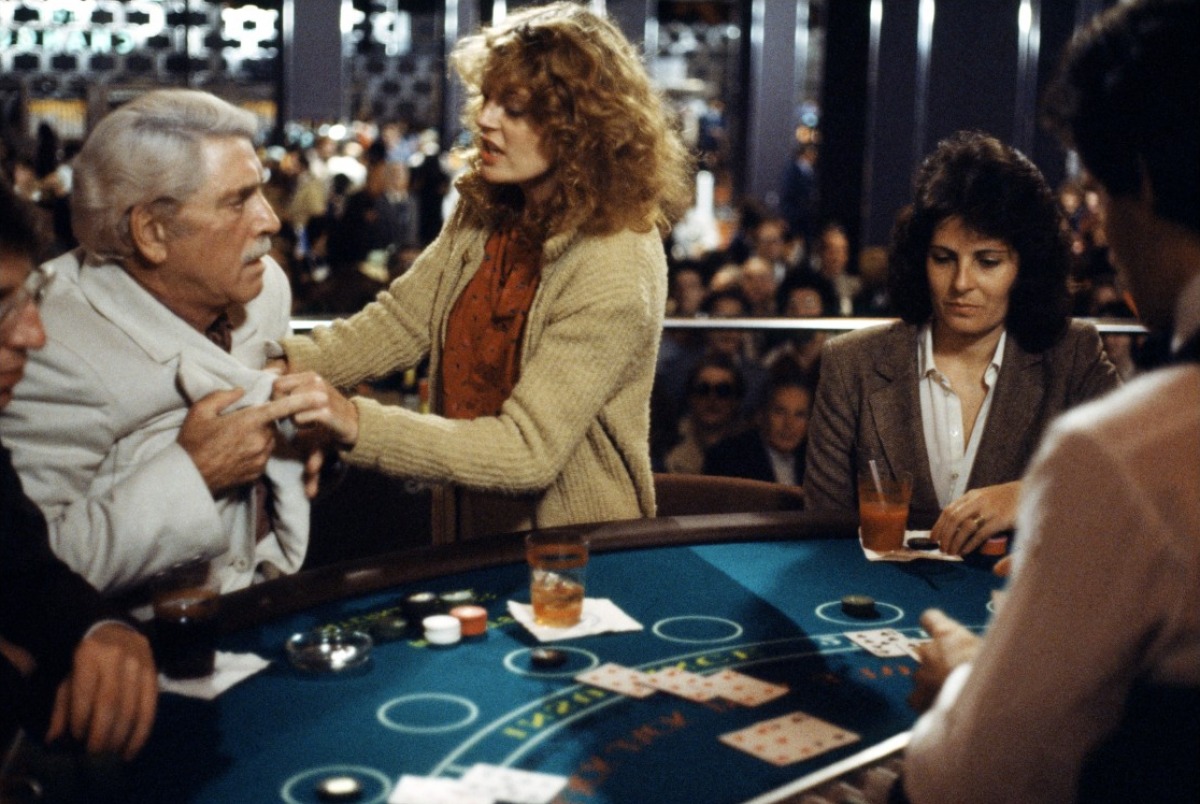
One exception has to be made! This is one of the most interesting films made about organized crime in the 1980s. It is set in the United States and for the most part has an American cast, but is a French-Canadian production.
So, while ignoring that fact just for a moment, “Atlantic City” is a great tale of corruption, and it is set in a corrupt city. Let’s not forget that Atlantic City became one of the symbols of early American gangster activity alongside New York or Chicago, mainly due to the gambling industry and the liquor smuggling during the Prohibition era.
The film begins with a small-time drug dealer, Dave, and his wife, Chrissie, crashing into her sister’s place in Atlantic City. Her sister, a woman named Sally (Susan Sarandon), lives in the same apartment building as Lou (Burt Lancaster), once a ‘small-time errand man’ for the mob in Las Vegas.
Dave came to Atlantic City to sell the drugs he had stolen from a Philadelphia gang, but once he is murdered, the women – Chrissie and Sally – are in danger of also being killed. Thus, it is Lou, who inherited Dave’s drugs and cut the necessary deals to sell them, who becomes responsible for protecting them, especially Sally, for whom he feels an attraction.
One of the great aspects of this film is precisely the exploration of moral corruption by all means. And by all means is either by plot construction, by the characters’ actions and their personalities, and even by the setting itself. There isn’t one shot that does not highlight the filthiness of the city, from ruins, buildings either vacant or at risk of collapsing, people’s apartments filled with junk and are viewed as prison-like spaces.
Everything is made to look like the people who inhabit it – either morally corrupt or on the verge of it. It provides a truthful glimpse of what Atlantic City had become in the 1980s, and its decline as a city that became as a remnant of a golden past.
4. Prince of the City (1981, Sidney Lumet)
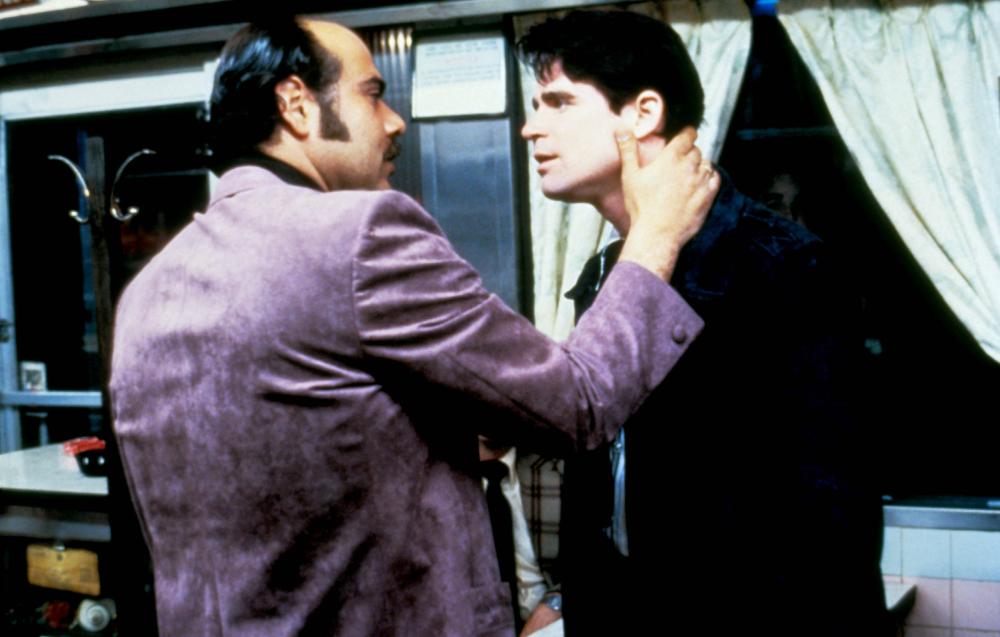
Although it is unarguably a film that, in the manner of “Serpico” (1973), is centred on the theme of police corruption, “Prince of the City” gives an interesting and for the most part accurate portrait over the organization and systematization of criminal activity and, most importantly, over the thin line that distinguishes justice from corruption and how easy it is to pass from one end to the other.
It is a tale of a man who attempts at ‘moral resurrection’, if such an expression exists. It’s a tale of a New York cop working in the narcotics unit, a man named Daniel Ciello (Treat Williams), who enters a moral crossroads once he becomes torn between two strong elements.
The first one – the guilt he feels regarding the way informants are treated by the police (himself included), and how the police operates and enforces its power upon small-time gangster activity and addicts. The second one – the necessity to protect his partners from the police corruption investigation in which he has agreed to participate.
Although some might consider “Prince of the City” to not be a gangster film, it certainly is in the manner of all gangster films in that is provides a deep look into the soul of man and how it acts. It shows its priorities, values, ideas and moral conceptions and, ultimately, a powerful portrait of human condition in the modern materialist/consumerist era.
3. Thief (1981, Michael Mann)
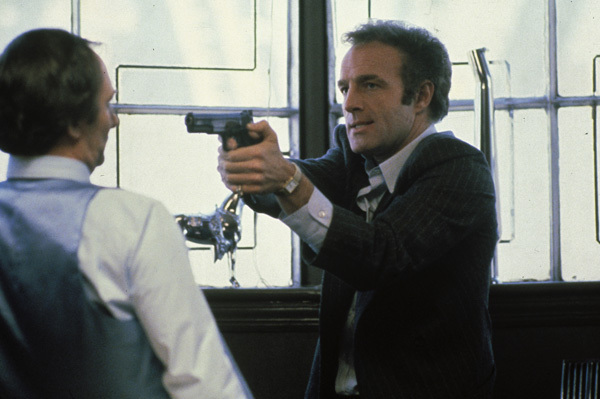
January 1, 1981: “Michael Mann’s ‘Thief’ is a film of style, substance, and violently felt emotion, all wrapped up in one of the most intelligent thrillers I’ve seen. It’s one of those films where you feel the authority right away: This movie knows its characters, knows its story, and knows exactly how it wants to tell us about them. At a time when thrillers have been devalued by the routine repetition of the same dumb chases, sex scenes, and gunfights, “Thief” is completely out of the ordinary.”
“Thief” concerns the life of Frank (James Caan), a man who spent half his life in prison where he learned with others the required skill and expertise to become a thief. Frank, in a ‘Charley Varrick manner’, owns a couple of businesses that operate as fronts for his criminal activities.
However, Frank has reached a time where he wants to step back, so, in one of his last scores – a diamond robbery – Frank discovers that the man responsible for giving him his payment, Joe Gags (Hal Frank), was murdered by his mob connections leaving Frank $185,000 short. Nevertheless, it is Frank’s aspiration to get his money back, even it means demanding it from the mob.
2. Brian De Palma: Scarface (1983), Wise Guys (1986) and The Untouchables (1987)
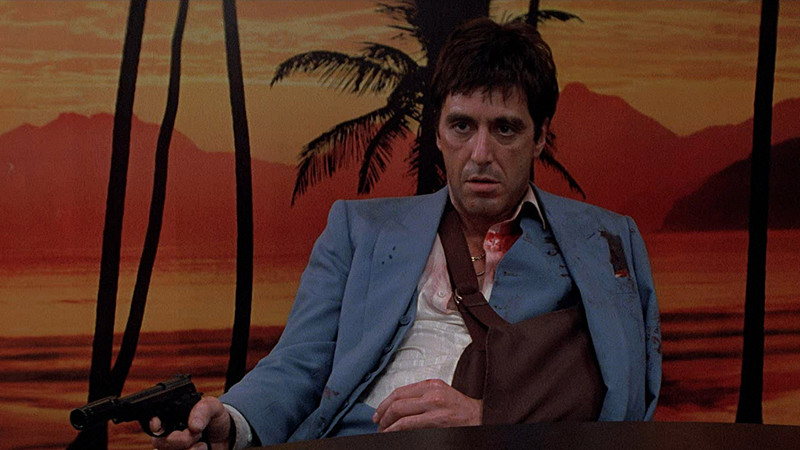
Brian De Palma was perhaps a filmmaker who reached a golden stage during the 1980s, a decade where his most popular and profitable films were made. De Palma had great interest in the organized crime during this period and so, three of his films produced during this period are undoubtedly some of the great contributions to the gangster genre in the 1980s.
The first, “Scarface” (1983), is a classic film that offers a glimpse into the violent world of organized crime, focusing more on the violent element than on the moral aspect of it. It is a remake of a 1932 classic – “Scarface: The Shame of the Nation” – focusing on the story of a Cuban immigrant named Tony Montana who embodies the old proverb: “The higher you reach, the higher you fall.” Montana, who takes over a drug cartel, becomes one of the wealthiest men in 1980’s Miami. However, he soon starts succumbing to his own greed and paranoia, which leaves him to one inevitable end – his fall.
“Wise Guys” (1986) is a comedy and one of the most popular films of the 1980s in its genre. Different in tone, but still providing an interesting overview of gangster activity, the film revolves around a pair named Harry Valentini (Danny DeVito) and Moe Dickstein (Joe Piscopo), who work as errand men for the New Jersey mob. They are frequently ridiculed by their employers, who assign them the lowest and most meaningless of jobs.
However, like their bosses, Moe and Harry have aspirations of becoming wealthy and successful as well. While in one of their ‘luck trials’ they end up losing a great amount of money for their bosses, and without knowing they are set up to kill each other in order to clear their bets. However, their choice is different: to run. Their destination: Atlantic City.
Near the end of the decade, De Palma directed yet another classic – “The Untouchables” (1987). Written by David Mamet, this film is set during the Prohibition era in Chicago, and it highlights the conflict between the Bureau of Prohibition, through agent Eliot Ness and his team, and Chicago’s most famous crime boss – Al Capone.
The film may lack in some aspects of the potential it had. However, it is certainly one of the most interesting studies made inside the gangster genre on camaraderie, relationships, the hierarchy of forces, and redemption. Surely worthy of your time.
1. Once Upon a Time in America (1984, Sergio Leone)
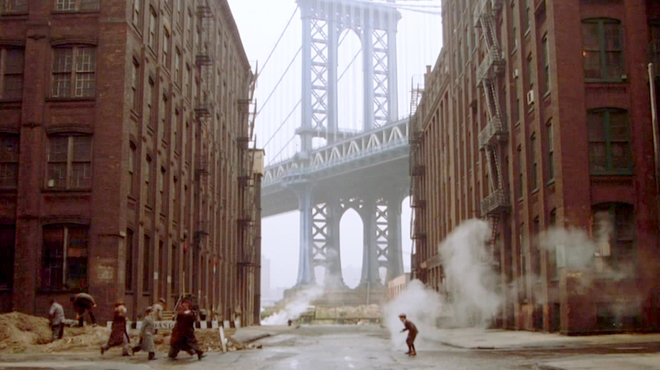
As the Prohibition era became a central setting of the gangster films in the 1980s, here follows another classic title in all gangster film lists, “Once Upon a Time in America” (1984). The film was directed by Sergio Leone (known at this time for his Dollar trilogy), who turned down the offer for directing “The Godfather” in order to adapt Harry Grey’s “The Hoods”.
The film is mainly set during the Prohibition era in Brooklyn and tells the story of a Jewish gangster, a man named David ‘Noodles’ Aaronson (Robert De Niro). ‘Mainly’ because upon returning again to the Lower East Side, Noodles starts remembering his old life in a series of flashbacks that go from 1920 to 1968, also confronting the consequences of it all.
One of the epitomes of gangster films, “Once Upon a Time in America” is a tale of the American Dream and how personal greed and violence has shaped the growth of a country who, in its essence, is a mixing bowl of cultures and ethnicities.
Other interesting examples: Crackers (1984); Johnny Dangerously (1984); Blood Ties (1986); Tough Guys (1986); Married to the Mob (1988); Deadbeat at Dawn (1988); Cookie (1989); Harlem Nights (1989).